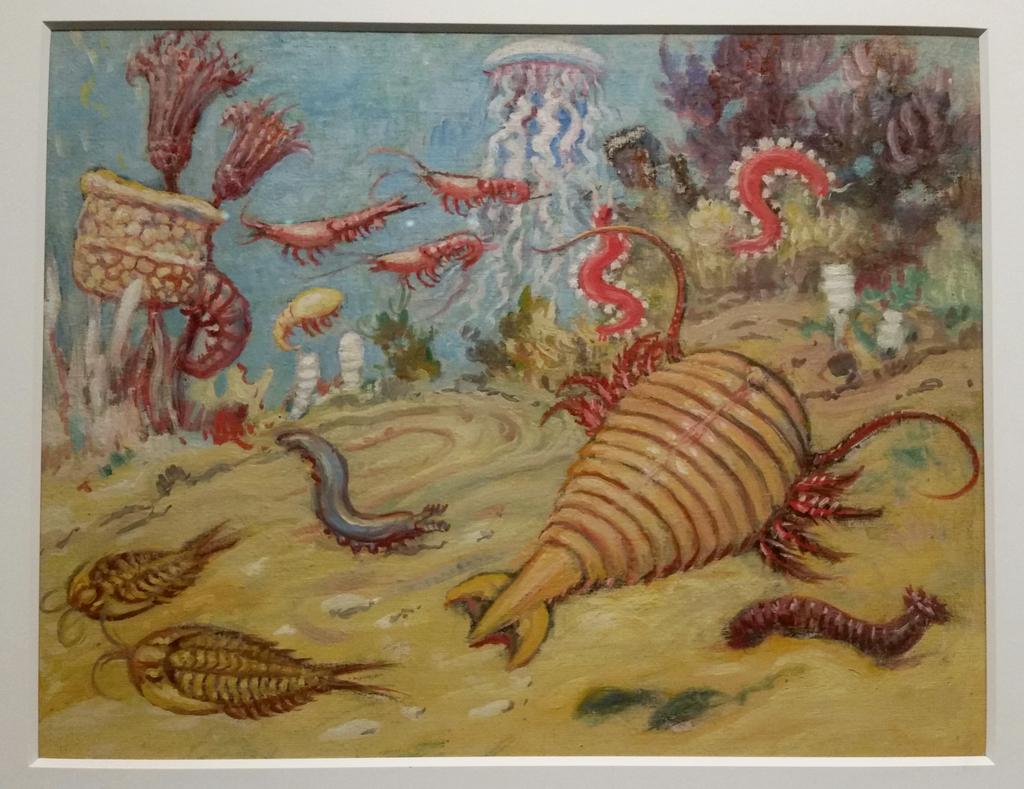It's the holiday season again, so I'm reviving one of my favorite traditions, the Paleontology Advent Calendar. This year I wanted to celebrate paleoart, the depiction of prehistoric worlds. Specifically, I wanted to highlight art by artists from the Northwest or art depicting the geological history of my favorite corner of the world. I'm a little behind the 8-ball this year, so I missed the first two days, but fortunately they work so well as a pair that I'm sharing them together now!
Artists: Charles R. Knight & Douglas HendersonYears: 1944-1946 & 2003
We begin with a bang with the most important fossil site in the Northwest, the Burgess Shale, and two titans of paleoartistry, Charles R. Knight and Douglas Henderson. Just why is the site so important and why do these two occupy such prominent places in the paleoart pantheon? As it happens, this pair of paintings answers both questions. Each illustrates what makes the artist's work so wonderful. In Knight's case, it's his generous use of color, his almost impressionist backgrounds, and his ability to convincingly depict movement (exemplified by the shrimp and worms at the center of this painting) that make his subjects leap off the canvas and seem so alive. The sunlight, shadow, and utterly immersive world of Henderson's painting illustrates his greatest strength: using pastels to create believable, engaging, and evocative environments in which the organisms themselves often take a back seat to atmosphere and setting. For my money, Henderson is the greatest of all paleo-landscape (or in this case, seascape) artists, and Knight is widely recognized as the preeminent painter of ancient animals. While Knight was frequently ahead of his time in his depictions of prehistoric life, here's one case where he got things wrong, depicting the fauna of the Burgess Shale as essentially identical to their distant descendants of the present day. Note in particular the strange, shrimp-like animal in the upper left and the jellyfish in the background. Strictly speaking, neither of these animals ever existed. Instead, as is often the case with the Burgess Shale, reality is far stranger and much more interesting. The large animal at the center of Henderson's painting is Anomalocaris, one of the first large predatory animals on Earth. It was so large, in fact, that early paleontologists studying the Burgess Shale found several bits and pieces of it but never considered that all these parts might fit together into a single organism; the "shrimp" in Knight's painting is an appendage from an Anomalocaris head and the "jellyfish" is its disc-like mouth. This diversity of forms, dating to nearly the beginning of animal life and inconceivable to the Gilded Age paleontologists who found and described the site, is what makes the Burgess Shale so incredible.
Want to see more? This is one of many Knight paintings on display at the Natural History Museum of LA County, but if you can't make it to California, there's an excellent online gallery of his work. Henderson also maintains a website on which you can not only view but buy much of his work (including the painting shown here).


No comments:
Post a Comment